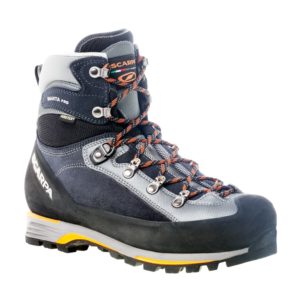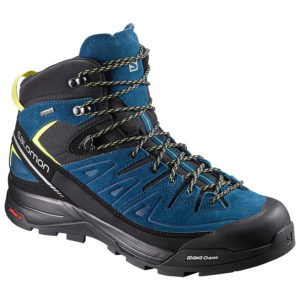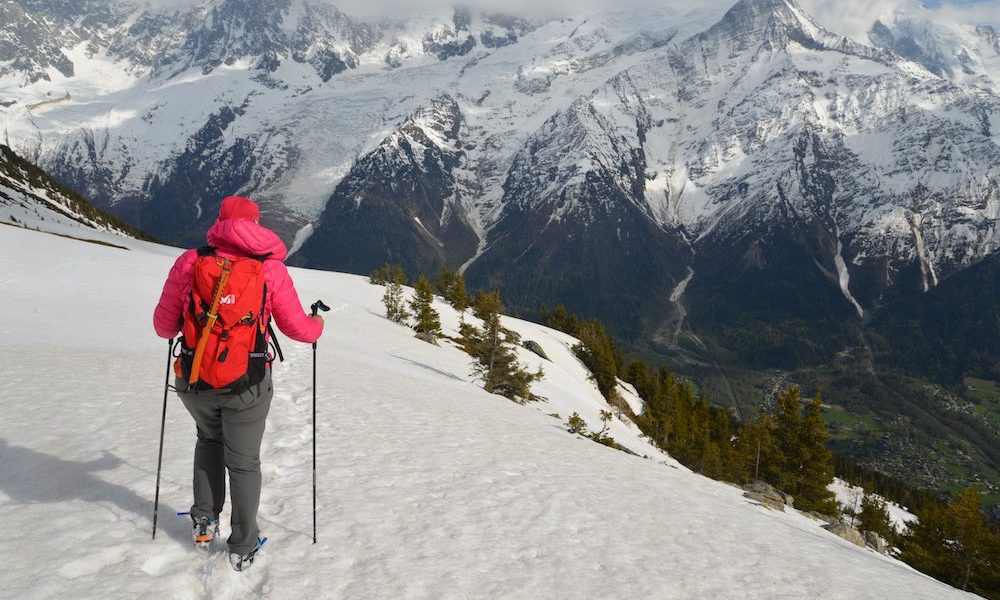Reviewing KEEN’s new Karraig boots got me thinking about boot classifications and, in particular, the difference between so-called 3/4-season boots and 4-season ones. What do those designations mean and do they actually make any sense?
Four-Season For One Season
In a way, 4-season boots are the easiest to understand, because actually – in the UK at least – they’re effectively one-season boots, maybe even just part of one-season boots, because the only time they really make sense is when you’re above the snowline. Why? Because the fully-stiffened soles provide an excellent, super stable platform for crampons and, though this gets mentioned less, for kicking into hard neve, either with the toe, heel or side of the sole unit.
But, here’s the irony, the rest of the year, they’re super stiff, unnecessarily weighty, uncomfortable because the soles have minimal flex, and clumsy because they see-saw on uneven ground and remove any trail feel you might have in a lighter boot or shoe. There are people who genuinely believe that you can wear 4-season boots all year. All I can say is that they are wrong. Brilliant above the snowline. Also handy on scrambling routes and anywhere else you want to stand on small edges and not the have the sole bend. The rest of the time, no thanks. While we’re here, take a look at lightweight alpine boots rather than traditional heavy leather behemoths if you want a lighter, more comfortable life.
3/4-Seasons – Slightly Less Bad
One alternative is the new-fangled – as in this century – 3/4-season boots, often dubbed ‘backpacking boots’ by continental boot brands. They occupy the sought-after niche of not being quite as good with crampons or on hard snow as full-on 4-season boots, but also not being quite as uncomfortable where there is no snow at all. They still tend to be clumpy, stiff, heavy and uncomfortable in a ‘not quite one or the other sort of way’ because basically, to work really well, regularly, with crampons, you need a stiff sole and stiff uppers.
Would you choose them over fully-stiffened 4-season boots? I guess if you had the choice between walking all year round in either, then yes because they’d be slightly less uncomfortable. There is, however, another solution:
Below Or Above The Snowline
If you’re remotely good on your feet, it makes a load more sense to have a crampon-compatible boot for use above the snowline and a light, nimble, comfortable one for use when there’s no snow. Not summer shoes or boots or mids. Or spring / autumn ones. Just below the snowline ones. Because your footwear doesn’t know what time of year it is, it mostly knows whether there’s snow or not.
The downside to this is that you need at least two pairs of mountain footwear and, sometimes, you’ll have to guess or carry microspikes. Or recognise that modern, cradle-mounted, flexible walking crampons actually work on a lot of lightweight footwear, even though no-one will recommend this officially. Mostly though, you’ll just be a lot more comfortable and lighter and nimbler on your feet.

Scarpa Manta Pro: ideal for above the snowline
The Stability Myth
It’s at this point someone will claim that they use super heavy, super stiff, high-ankle boots all year round because otherwise they will sprain their ankle immediately. This is rubbish. The reality is that shoe and boot stability isn’t due to your ankles being splinted by a high boot, it’s down to the heel fit of your footwear, the lateral stiffness of the boot or shoe construction. The shape of the heel of the sole – flared outwards is more stable, like a pyramid – and your ability to put your foot down on flat things and react instinctively if you don’t.
If you’ve sprained an ankle repeatedly, the chances are that your problem is actually a combination of slack ligaments and connective tissue along with damaged proprioception. In simple terms, your brain can’t react to the angle of your foot relative to your leg until it’s too late. Wearing a high cuff, I think, gives psychological reassurance, by adding skin sensation, but doesn’t actually stop your ankle from turning. It just warns you that it’s happening earlier, in the same way that taping an ankle does.
So you might think stiffer soles are the answer, but you’d be better off seeing a physio, improving your proprioception using a wobble board and other exercises and learning how to use tape. How do I know this? My left ankle is held together by limp spaghetti, but mostly I walk below the snowline in trail shoes or mids.
Best of Both Worlds?
So why has no-one tried to fill in the gap and create a comfortable, but winter-friendly walking boot? A cynic might think it’s because brands want to sell as many boots and shoes as possible… but… Salomon’s best-kept not quite secret is its X-ALP technology. It works like this: inside the sole is a sort of scaled, segmented stiffener. The clever thing is that it bends like a normal walking boot in normal walking use, making it super comfortable, but weight it laterally and the plates lock together to give a near rigid platform for edging and cramponing. It’s genius. The best trick the devil ever played. And if I really did have to have just one boot for all year round, something from the X-ALP range would likely be it.

Salomon’s X-ALP boots are great all-rounders
So…
… where does that leave things? Simple. There are no seasons and no seasonal boots, just above the snowline and below it. A boot that does one well, will suck at the other. And if you absolutely have to compromise, just do it occasionally. Four-season boots are only good for one thing. And as ever, your mileage may vary, but not by season.







